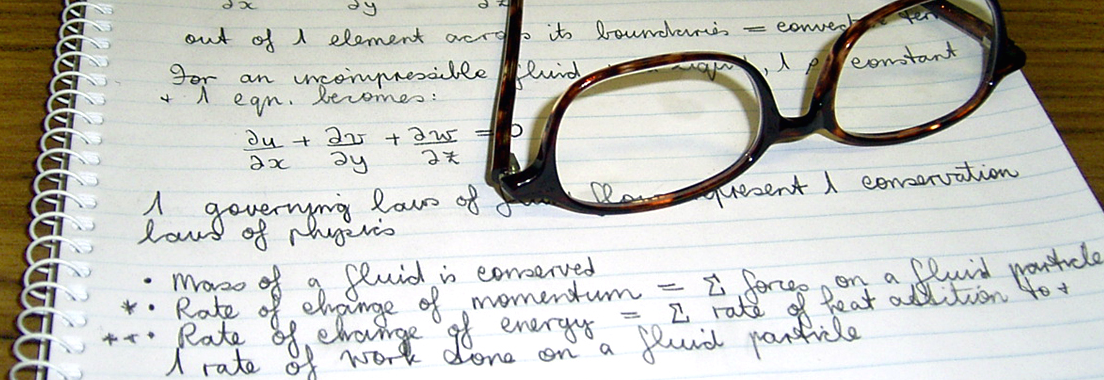-
Charlottesville
- (434) 296-5111
-
Great Falls
- (703) 759-3624
-
McLean
- (703) 288-2808
Georgetown Learning Centers Blog

Breaking Down Algebra-Based AP Physics Classes
Last year, the College Board implemented two brand new courses for Algebra-based Physics: AP Physics 1 and AP Physics 2. These are year-long courses designed to change the way high school students learn Physics. With a new focus on theoretical understanding, critical thinking, and reasoning skills, these courses require a different approach for both teaching and learning. Knowing the recent changes to Algebra-based physics will allow students to focus on the proper techniques for understanding the material and mastering these courses. Let’s take a look!
AP Physics B
“The past is never dead. It’s not even past.” -William Faulkner
The College Board used to split physics into two parts: Algebra-based Physics B and Calculus-based Physics C. Physics B was a yearlong class that covered a wide range of topics, including Newtonian mechanics, fluid mechanics and thermal physics, electricity and magnetism, waves and optics, and atomic and nuclear physics. The focus of Physics B was to introduce students to a wide variety of topics and give them the tools necessary to work through problems related to these topics. The AP Exam featured questions from every topic covered and would ask students to complete problems with an emphasis on calculations and numerical answers. Essentially, the course was a mile wide, but only a foot deep.
Here is part of a typical AP Physics B question from the 2013 Physics B Free-Response section (emphasis added):
A 20 kg box on a horizontal frictionless surface is moving to the right at a speed of 4.0 m/s. The box hits and remains attached to one end of a spring of negligible mass whose other end is attached to a wall. As a result, the spring compresses a maximum distance of 0.50 m, and the box then oscillates back and forth.
a) i) The spring does work on the box from the moment the box first hits the spring to the moment the spring first reaches its maximum compression. Indicate whether the work done by the spring is positive, negative, or zero. Justify your answer.
ii) Calculate the magnitude of the work described in part i.
b) Calculate the spring constant of the spring.
c) Calculate the magnitude of the maximum acceleration of the box.
d) Calculate the frequency of the oscillation of the box.
If this looks like Greek to you, don’t panic! Let’s take a look at just the language of the question, which will tell us quite a bit about the style of the question. If you take a look at the bolded words in each section of the question, you can see that the emphasis is on calculation. The problem gives numbers and asks for numbers. The grading for these questions usually gives one point for using the correct equation, one point for substituting in the correct values, and one point for the correct answer. One sentence is enough for the justification part in order to get full points for that section. A student would be able to work through this section by applying the right formulas and substituting in the appropriate values.
AP Physics 1 and AP Physics 2
“Yesterday is gone. Tomorrow has not yet come. We have only today. Let us begin.” -Mother Teresa
Starting with the 2014-2015 school year, College Board exchanged AP Physics B for the two new yearlong courses. AP Physics 1 covers Newtonian mechanics; work, energy, and power; mechanical waves and sound; and a small amount of electricity and magnetism. AP Physics 2 covers thermodynamics; fluid dynamics; the rest of electricity and magnetism; optics; and small amounts of quantum, atomic, and nuclear physics. These courses still include lab activities and experiments, but allowing a full year for around half of the topics from AP Physics B allows teachers to devote more time to each topic.
The important aspect is that College Board has decided to narrow the range of concepts, but go further in depth in the theory behind topics. By limiting the amount of content in each course, College Board has placed an emphasis on conceptual understanding. This means that there will be less of an emphasis on using equations, but more the ideas behind them. This shows up in theory-based questions, like designing an experiment or asking about changing variables. Essentially, we’ve gone from a mile wide and a foot deep to around half a mile wide and half a mile deep, with less material, but more in-depth coverage.
Accordingly, the AP tests have changed to suit this new style. The new tests will feature the following changes:
-
Fewer multiple-choice questions (50 questions instead of 75) to allow students more time to apply reasoning skills.
-
Emphasis on symbolic and proportional reasoning and the ability to translate between multiple representations of the same process.
-
Fewer free-response questions to allow students more time to express qualitative and quantitative explanations, reasoning, and justifications.
-
Introduction of an experimental-design question in order to demonstrate understanding of scientific principles and practices.
Let’s take a look at an example of the new question types and what students will now see. Here is a selection from a free-response question from the 2015 AP Physics 1 AP Exam (emphasis added):
Some students want to know what gets used up in an incandescent lightbulb when it is in series with a resistor: current, energy, or both. They come up with the following two questions.
(1) In one second, do fewer electrons leave the bulb than enter the bulb?
(2) Does the electric potential of electrons change while inside the bulb?
The students have an adjustable power source, insulated wire, lightbulbs, resistors, switches, voltmeters, ammeters, and other standard lab equipment. Assume that the power supply and voltmeters are marked in 0.1 V increments and the ammeters are marked in 0.01 A increments.
a) Describe an experimental procedure that could be used to answer questions (1) and (2) above. In your description, state the measurements you would make and how you would use the equipment to make them. Include a neat, labeled diagram of your setup.
b)
i) Explain how data from the experiment you described can be used to answer (1) above.
ii) Explain how data from the experiment you described can be used to answer (2) above.
Once again, don’t worry if this looks like a foreign language! We can look again at the language of the problem to uncover how College Board is testing knowledge. The bolded words show us that the test is asking the student to create an experiment and fully explain it. It requires the student to have creativity, data analysis skills, and above all, a solid understanding of the principles behind the physical process of a lightbulb. This problem is not equation focused, and the answers will be in paragraph form. In this question, the emphasis is on the student’s understanding of the principles and theory. Additionally, it is a sign of the shift from numerical answers and short responses to paragraph style responses, in which a student must clearly display their understanding in a logical manner. Quite a different style!
What This Means for Students Moving Forward
“Where do we go now?” -William Bruce Rose, Jr.
So now that you know the differences, what does this mean for a student taking AP Physics 1 or AP Physics 2? It means that the student needs to change the way he/she is looking at Physics. Instead of focusing on remembering equations and applying them, a student needs to understand exactly what is going on in each scenario and why certain equations should be used. Any time I start a new problem with a student, I always take a minute to have the student sketch out what is happening and explain in his or her own words what we are looking at, what we know, and how we can move forward. It is important that the student takes a step back to focus on not only how, but also why we can move forward with a problem. College Board has made these changes to encourage learning about physics in an understanding-based way, which allows the student to understand the principles, not memorize equations. This can sometimes be tough, as worksheets and quizzes from teachers may still be focused on calculation, but it’s one of the best ways to learn physics.
You may ask, “Are there any ways for a student to make sure he or she is understanding what’s new?” Tons! There are many ways for a student to make sure that he/she understands new concepts, and finding one that works for each student is very possible. Here are a few things I would recommend:
-
Always drawing diagrams to make sure you know what is going on in each problem.
-
Constantly asking “Why can I solve this?” and “Why can I use this equation?”
-
Explaining problems and concepts to friends/parents/siblings/pets.
-
Discussing problems with a teacher/classmate/tutor to make sure you understand what is happening.
-
Reviewing outside resources to add to your knowledge. This could be your textbook, your teacher, reputable websites, another textbook, or YouTube videos (I recommend the MIT lectures by Walter Lewin).
-
And above all, ask questions in class! If there is ever anything you are not sure of, raise your hand and ask your teacher to go over it. Chances are good that if you don’t understand, someone else doesn’t either!
The role of the student in new AP Physics courses is different, but different can be good. With these understanding-based courses, students can learn truly learn physics. While each student is different in terms of learning styles, the proper tools and a firm understanding of how to approach the class are great ways for any student to learn physics the right way and be prepared for the AP tests in May. Please feel free to contact us if you have questions about the AP Physics courses and we will be happy to assist you!

Alex Ellis
Senior Associate Director
Georgetown Learning Centers
